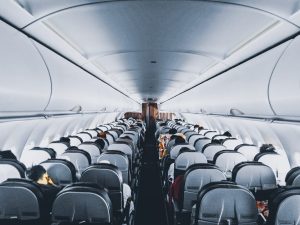Access Board to Assess Feasibility of Wheelchair Restraint Systems on Aircraft
By PVA National Staff
On February 5, Senior Associate Advocacy Director, Lee Page, and Associate Executive Director, Government Relations, Heather Ansley, presented to the members of the Committee for a Study of Feasibility of Wheelchair Restraint Systems Passenger Aircraft about the boarding and deplaning experience of wheelchair users. This was the first meeting of the Committee, which was authorized by the FAA Reauthorization Act of 2018.
The Access Board’s study has the potential to advance access to air travel for passengers who use wheelchairs. As directed by Congress, this project will assess the feasibility of equipping passenger planes with restraint systems so that passengers can remain in their wheelchairs on flights.
Having to transfer out of a wheelchair makes air travel very difficult, if not impossible, for many people with disabilities.
The National Academy of Sciences’ Transportation Research Board (TRB) is conducting this study. TRB has organized a committee of experts to evaluate the feasibility of in-cabin wheelchair restraint systems.
The members include: experts in aircraft interiors and safety engineering, accessibility, wheelchair design and crashworthiness, airline operations, and other disciplines. Committee members will evaluate the design, engineering, and safety requirements for equipping aircraft with locking or tie-down mechanisms for non-motorized and motorized wheelchairs used as seats.
If such restraint systems are found to be feasible, the committee will then assess the wheelchair restraint systems that can be used to accommodate passengers using wheelchairs through all phases of flight, from boarding to deplaning.
In his comments, Mr. Page presented a slide show of the various aisle chairs that are currently in service at airports throughout the country. He focused on the process PVA members have to endure to board an airplane.
Specifically, he described being the first to board, by transferring onto an aisle chair at the bottom of a sloped jetway and relying on contract personnel to bring the passenger into the plane for transfer to an airline seat. The path of travel to the airline seat can cause further injury because the aisle is too narrow and seats are too close together.
Too often the airline aisle chairs are in disrepair and airline personnel don’t know how to properly assist passengers. Furthermore, passengers’ wheelchairs are stowed in the cargo hold and often damaged, mishandled, or lost as a result.
A peer-reviewed report on the panel’s findings will be published at the conclusion of the project and submitted to Congress.
The report is expected by October 2021.



